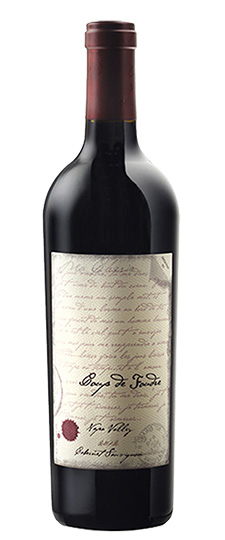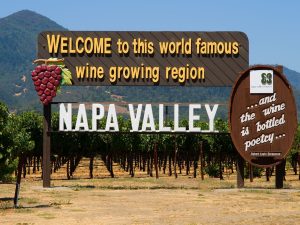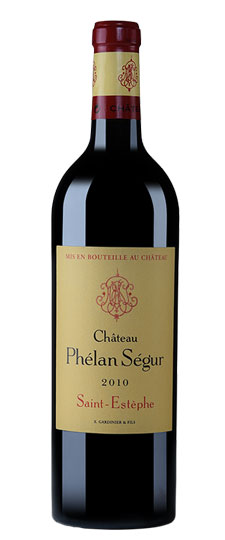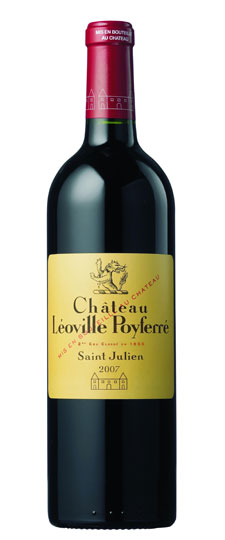Wine Score
Wine Spectator
Balances power and finesse, offering aromas of currant and violet that open to rich yet densely packed flavors of blackberry, olive and loam. The tight finish of tannins suggest a long life. Merlot, Cabernet Franc and Petit Verdot. Best from 2015 through 2021. From California.
Grape Variety
Cabernet Franc – Merlot Wine
Cabernet Franc – Merlot is an established and important variant on the classic Bordeaux blend, particularly on the Right Bank. The two varieties have complementary features: Merlot’s dark, juicy fruit is balanced by the herbal aromas and structure of Cabernet Franc. This blend is used in the prestigious Pomerol and Saint-Emilion appellations, and makes some key wines – the most famous of which is undoubtedly Chateau Cheval Blanc.
Merlot is usually used in higher proportions in this blend, thanks to its broad appeal and higher profile than Cabernet Franc. It provides most of the fruit component, offering up flavors of mulberries, plum and dark berries. Cabernet Franc adds more perfumed fragrances, usually with a distinctive herbal note. Used in higher proportions, it may also add some tobacco-leaf and green bell-pepper characteristics.
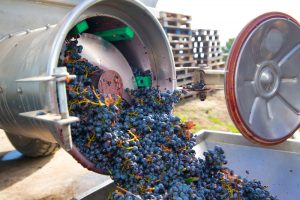 The Cabernet Franc – Merlot blend has long been an institution on the Right Bank, but the wide spread of these two varieties has seen experimentation from several corners of the winegrowing world. In the US, some top wines are made from Cabernet Franc and Merlot (often with the addition of Cabernet Sauvignon) in California, Washington and New York. The blend is also made in Tuscany and Puglia in Italy.
The Cabernet Franc – Merlot blend has long been an institution on the Right Bank, but the wide spread of these two varieties has seen experimentation from several corners of the winegrowing world. In the US, some top wines are made from Cabernet Franc and Merlot (often with the addition of Cabernet Sauvignon) in California, Washington and New York. The blend is also made in Tuscany and Puglia in Italy.
In the southern hemisphere, Cabernet Franc – Merlot wines are popular in regions that have developed reputations for producing quality Bordeaux-style wines: namely in South Africa’s Stellenbosch region and Hawke’s Bay in New Zealand.
Food matches for Cabernet Franc – Merlot wines include:
- Braised lamb with truffles
- Roasted wild boar
- Steak with red wine sauce
Region
Napa Valley Wine
Napa Valley, an hour’s drive north of San Francisco, California, is the most famous and prestigious wine region anywhere in the New World. Although a number of grape varieties are grown in the valley’s vineyards, the area is particularly known for its Cabernet Sauvignon. The classic ‘Napa Cab’, the archetypal Napa Valley wine, is a rich, oak-aged red with aromas of blackcurrant, boysenberry, liquorice, vanilla and smoky, bittersweet chocolate.
Situated immediately north of San Pablo Bay, the valley runs roughly SE – NW for approximately 35 miles (60km) between the Vacas and Mayacamas mountain ranges (to the east and west respectively). The scenic 40-minute drive between the Napa and Calistoga townships passes through some of the most valuable viticultural real estate on Earth.
There are several reasons for Napa Valley’s global renown as a wine region. Most obvious is that the wines are produced to high standards, in a popular style, and are very well marketed. Then there is the region’s accessibility from San Francisco. This draws millions of wine tourists to the valley each year to sample its wines and world-class gastronomy. And no less important (even after almost four decades) is the triumph of Napa Valley wines over their rivals from Bordeaux and Burgundy in the 1976 Paris Judgment.
Wine has been made in Napa Valley since the 19th century, but it is only since the 1960s that wine of any particular quality has been produced. The founding pioneers of Napa Valley winemaking were George C. Yount (see Yountville), and John Patchett and his winemaker Charles Krug, founder of the eponymous winery. Also of note are the Beringer brothers Jacob and Frederick, whose Beringer Vineyards (est. 1875) is one of California’s oldest continuously operated wineries and features on the the U.S. National Register of Historic Places. Robert Mondavi, who established his winery in 1966, is considered to be one of the pioneers of Napa’s modern wine industry, as well as being one of the first proponents of varietal labeling.
The range of grape varieties grown in the Napa Valley has evolved steadily over the 150 years since Yount planted his first vines. Cabernet Sauvignon has risen confidently to become Napa’s star performer, and is the most widely planted grape in almost all of the valley’s sub-regions. The notable exception to this rule is Carneros, whose cool, breezy mesoclimate is better suited to Pinot Noir and Chardonnay. Merlot is also prominent, although since its fall from favor in the 1990s it is now used mostly as a blending component for Napa’s Meritage wines and Bordeaux blends. Although it represents only a small proportion of the valley’s vineyard area here, Zinfandel remains significant in the Napa wine portfolio. Hillside sites above the valley floor provide exactly the kind of warm, dry environment in which Zinfandel (California’s signature variety) performs best, particularly on rocky, free-draining slopes.
White wines are strongly outnumbered here, but play a valuable supporting role, bringing an element of diversity to the valley. Once upon a time, Riesling was the variety of choice, but has now been replaced almost completely by Sauvignon Blanc and Chardonnay.
Climate, geology and topography are three essential components in what makes Napa Valley such a first-rate viticultural area. The combined influences of San Pablo Bay and the hills of the North Coast Ranges are responsible for the valley’s very particular mesoclimate. The bay generates morning fog, and the hills channel it inland, up into the valley. Without this fog that comes rolling in from the bays, the valley’s climate would be substantially warmer than it is, making it difficult to achieve structure and balance in the wines. The fog doesn’t reach the higher parts of the valley, however, leaving these to rely on the cooling effects of altitude to keep their vines in balance.
Producer Notes
Our Story
(koo dah foo drah) – The moment when “lightning strikes” or something unforgettable occurs that you want to capture forever.
One score and three years ago, I met my wife, who was living abroad in France. She was not yet my wife nor did she know she would be. While at a soiree in the French Alps, and with matters seemingly in hand, I sauntered off to the bar to work my French for a refill of Malibu and fruit juice. It was then that I noticed a Frenchman awfully close to my gal, making her eyes flutter and her beret tipsy.
He must have the greatest one liner in the world, I thought as I yelled “FEU!” (‘fire’ in French). Once the room cleared out, I ask my sweetheart what he could possibly have said to make her fall into his arms. Her answer? “He held my hands and asked if I believed in the Coup de Foudre.”
After years of thinking he’d called her a cute cauliflower, I consulted a French friend who defined Coup de Foudre
as a lightning strike, something unforgettable-“love at first sight”-be it food, wine or someone incredible.
For the past 20 years, we have had the great fortune and honor to work with wine, savor it, and witness its impact on consumers as they navigate the wonders of wine and the sheer pleasure that it brings. We have watched many people commemorate special times in their lives with wine. A few years ago, we embarked on our path to create a unique wine with elements worthy of a Coup de Foudre.
Now that you know our story, we hope that you will share Coup de Foudre wines with the special people in your lives—and that Coup de Foudre will be part of the stories you are inspired to share with us in the future.
Capture the moment! —John Schwartz

![Amuse Bouche, Napa Valley [Merlot/Cabernet Franc] 2010](https://www.wineyou.com/wp-content/uploads/2017/06/Amuse-Bouche-Napa-Valley-Merlot-Cabernet-Franc-2010.jpg)

